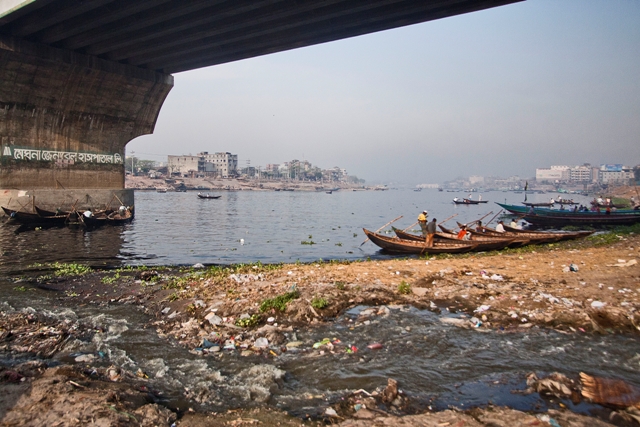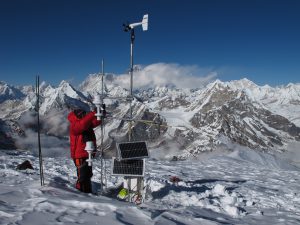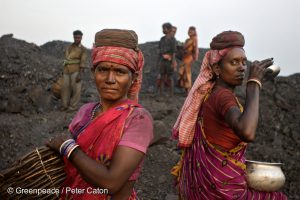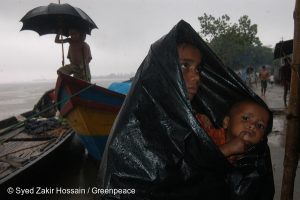The Bangladesh government has taken steps to revive the Buriganga River, the lifeline of the capital Dhaka, by diverting water from the transboundary Jamuna River to flush out the pollution that has turned the river into a stagnant sewer.
This will involve dredging a 162 kilometre-long channel from the Jamuna to the Buriganga River. The Jamuna is part of the Brahmaputra River which flows through Tibet and India before spilling into the Bay of Bengal.
In July 2015, the government signed a memorandum of understanding with a Chinese company– China National Aero-technology International Engineering Corporation – to conduct a feasibility study and design the new Buriganga restoration project within two years.
As part of the deal, the company has agreed to secure funding from the Chinese government for Bangladesh’s priority project
The Bangladesh government attempted to kick-start the river restoration project back in 2010, but the plans fell through due to lack of funds.
Water resources minister Anisul Islam Mahmud hopes the new river restoration project will begin by June next year and will cost an estimated Tk 1,500 (US$ 200 million), he told thethirdpole.net.
The water will be diverted from the Bangabandhu bridge on the Jamuna along the Dhaleswari-Pungli-Bangshi-Turag-Buriganga river system, though the project design has not yet been finalised, the water minister said.
The Bangladesh Water Development Board (BWDB), responsible for implementing the plans, claims the project will breathe life back into Dhaka’s highly polluted rivers and ensure a steady supply of water to the growing metropolis.
Water scarcity
The Jamuna River is the main distributary channel of the old Brahmaputra River, which flows from India to Bangladesh. Every year the river carries vast amounts of water during the monsoon, but during the dry season its flow drops dramatically.
Environmental experts fear that diverting water during the lean season will pose serious threats to the Jamuna’s rich ecosystem and will not even solve the problems of the Buriganga River.
“Diverting water from Jamuna is not a long-term solution to revive Buriganga,” said eminent water expert professor Ainun Nishat. It would be wiser to clean up the Buriganga rather than bringing water from the Jamuna, he added.
Abdul Matin, general secretary of Bangladesh Paribesh Andolan (Bapa) a voluntary environmental organisation, is also fearful of the consequences for the Jamuna, where many chars (river islands) will emerge because of the lack of water flow, he said.
Minister Anisul Islam Mahmud claimed the water diversion will not adversely impact the Jamuna ecosystem since it has sufficient water flow during the dry period.
Only one tenth of the Jamuna’s total flow (or about 300 cubic metres per second of water) needs to be diverted to restore the city’s river systems, according to a feasibility study carried out by the government’s Institute of Water Modelling in 2004.
But it is still unclear how much water the project in its new incarnation will require. Abul Kalam Azad, chief engineer at BWDB, said that a new feasibility study will need to be carried out.
Dealing with pollution
Factories and tanneries along the banks of Buriganga pour untreated waste directly into the river. About 90,000 cubic metres of untreated industrial waste is dumped into the Buriganga every day, while tanneries in Hazaribagh dump 21,000 cubic metres of waste containing heavy metals and sulfuric acid into the river, according to local environmental group Poribesh Bachao Andolon (Poba). Household waste also contributes to river pollution.
In January 2014, a team from Poba tested the water quality at different points along the river and found that dissolved oxygen levels were not high enough to support any form of aquatic life.
The river water contained less 0.62mg of dissolved oxygen per litre in the eight sites tested, much lower than the 5mg minimum stipulated by law.
“Pollution must be checked in the Buriganga and wetlands should be protected in areas upstream to increase river flow and restore the lifeline of Dhaka,” Poba chairman Abu Naser Khan told thethirdpole.net.
Because the river is so polluted Dhaka’s 14 million residents rely largely on groundwater for drinking water and household use. The Dhaka Water and Sewerage Authority (WASA) is also trying to reduce the city’s dependence on groundwater by bringing water from the Meghna River.
If polluted water from the Buriganga seeps into groundwater, this will have devastating consequences for Dhaka since over 80% of WASA water comes from underground, said Dr M. Maksudur Rahman, a professor at the department of geography and environment at Dhaka University.
In the past, many people depended on the river to earn a living, but pollution has forced thousands of them, including fishermen, to work as street vendors or day labourers.
Although the government has promised to move tanneries from Hazaribagh to Savar, north-west of the city, the industry has not yet been relocated.
Mir Mostafa Kamal, director of the river engineering division of IWM, said pollutants could be removed from the river by increasing flow to some extent, but the authorities must take steps to stop waste being dumped directly into the Buriganga.







